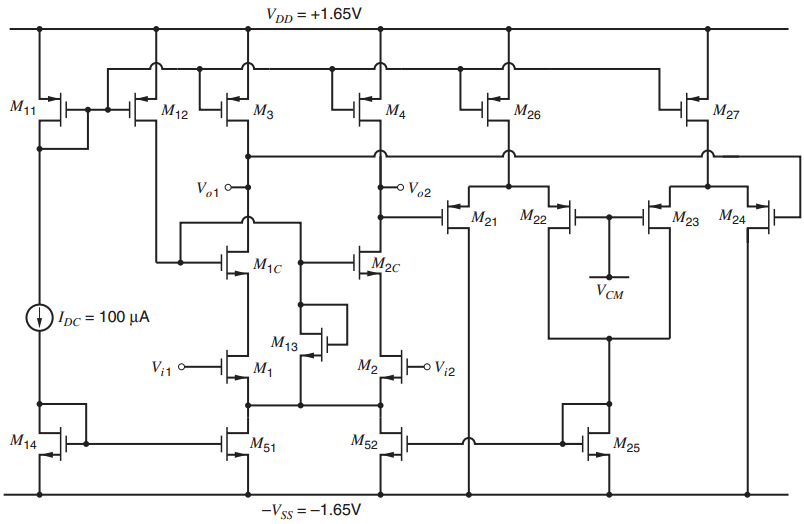A fully differential op amp with CMFB is shown in Fig. 12.57. For M 1 , M
Question:
(a) Choose W values for M12 and M51 so that |ID13|=20 µA. Use L = 0.8 µm for M51 and L = 1.4 µm for M12.
(b) Use SPICE to find the low-frequency op-amp gains vod /vid, voc/vic, vod/vic, and voc/vid with the CMFB active.
(c) Calculate the output slew rate dVod/dt if a 4-pF capacitor is connected from each op-amp output to ground.
(d) What is the differential output voltage swing of this op amp? Assume Vic = VCM, and ignore body effect for this calculation.
(e) Repeat (b) when the input transistors are mismatched with W1 = 63 µm and W2 = 65 µm. (Note: With mismatch, the op-amp offset voltage is not zero.)
(f) Repeat (b) when the load transistors are mismatched with W3 = 95 µm and W4 = 97 µm.
Figure 12.57:

Step by Step Answer:

Analysis and Design of Analog Integrated Circuits
ISBN: 978-0470245996
5th edition
Authors: Paul R. Gray, Paul J. Hurst Stephen H. Lewis, Robert G. Meyer





